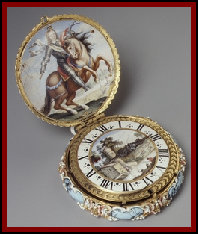
Upcoming Auctions in the Mid-Atlantic
Estate Sale, Thursday – Saturday, October 22 – 24, 2009, 11405 Twining Lane, Potomac, Maryland featuring
rugs, Asian art, Limoges boxes and antique furniture: 301.871.1643
Estate Sale, Thursday – Saturday, October 22 –
24, 2009, 8402 Reflection Lane, Vienna, Virginia featuring African art, furniture, lamps and decorative: 703.385.5452
Estate
Sale, Thursday – Saturday, October 22 – 24, 2009, 511 Clinton Street, Jamestown, New York featuring vintage dolls, collectibles, vintage
prints and art: 716.569.3449
Estate Sale, Thursday – Saturday, October 22 – 24, 2009, 225 Old Lancaster Avenue, Bala Cynwood,
Pennsylvania featuring antique furniture, books & art: 610.446.0504













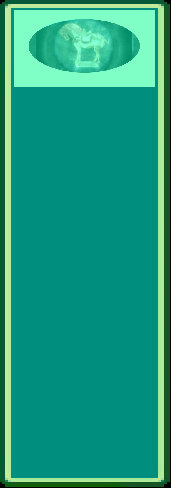







Thank you for your continued support and readership. Please insure to forward this Newsletter to your friends and neighbors. If you no longer wish to receive our emails regarding the update of this page, please send us an email to info@nova-antiques.com with the subject line "OPT OUT"
NOVA-Antiques.com does not run, manage or operate any of the flea markets, auction houses or estate sale companies advertised on this page. The NOVA-Antiques Newsletter is published for the exclusive use, enjoyment and convenience of our readers and subscribers. Any questions regarding the flea markets, auction houses and estate sale companies should be directed to the appropriate owner, promoter or manager.



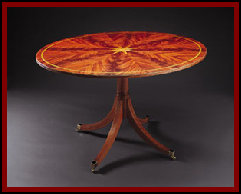

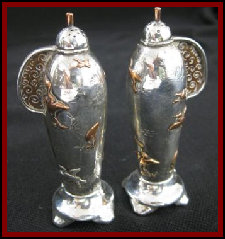
Furniture Designer Thomas Sheraton
A few months ago, we wrote about The Georgian Period and Thomas Chippendale. Many people
who admire or collect antique furniture are very familiar with Thomas Chippendale and George Hepplewhite; and rightly so, as these
are two of the most talented and gifted furniture designers of the 1700’s; a period that was full of gifted designers. What
a lot of people don’t realize is that there was a third member of that group that was equally talented craftsman whose name is not
as well known unless you are really into period furniture. His name was Thomas Sheraton.
Although we know that Sheraton was born in 1751 in Stockton on Tees in England, not much has been written about his personal life
or what led him to become one of the most sought after furniture designers of the time. An interesting fact is that the
first book penned by Sheraton was indeed a religious tome and had nothing to do with furniture design. It wasn’t until he moved
to London in about 1790 that he was finally recognized as a premier designer and teacher/consultant of other craftsmen. In 1791,
he published a four book series titled, The Cabinet Maker’s and Upholsterer’s Drawing Book.
This series of books as well as the design and encyclopedic books that followed were hugely popular with craftsmen and cabinetmakers
and many of them built Sheraton Furniture. It is widely believed that Thomas Sheraton did not ever build a piece of furniture
and that furniture attributed to him is indeed built in his “style” or “design” but never by his hand. Most of Sheraton’s designs
were in the Louis XVI pattern and featured delicate and simple legs, gorgeous inlay and highly polished woods as well as classical
motifs. He used a lot of satinwood and mahogany in his designs and used rosewood, kingwood and zebrawood for the most beautiful
and intricate inlay designs.
Where to Find Sheraton Furniture – Upcoming Shows
This Saturday and Sunday, October 24 & 25, 2009, the Salt City Autumn Antiques
Show will take place at the New York State Fairgrounds in Syracuse, New York. This annual antiques show which attracts over
two hundred and fifty dealers from around the world features period antique furniture, vintage pottery and glass, estate jewelry,
vintage toys and lighting as well as rugs, antique lighting and quilts. It runs from 9 am to 5 pm on both days.
People
in the DC metro area are very familiar with the DC Big Flea which takes place every few months in Chantilly, Virginia . . . well this
Saturday and Sunday is the debut of the Baltimore Big Flea run by the same folks of DC Big Flea fame. This antique show, which
will take place at the Maryland State Fairgrounds, has attracted many dealers from around the country featuring antique furniture
and vintage collectibles as well as vintage posters, fine art and vintage toys.
October 25, 2009, Octoberfest Toy Show, Nur Shrine Temple, New Castle, Delaware
October 24-25, 2009, Greenberg’s Train &
Toy Show, Fredericksburg Expo Center, Fredericksburg, Virginia
October 30 – November 1, 2009, The New York Antiques Show, Wallace
Hall Church of St. Ignatius, New York, New York
October 30 – November 1, 2009, Treasures Show & Sale, University of Pennsylvania,
Philadelphia, Pennsylvania
Celebrating 50 years, The Annual Manhasset Antiques Show will take place on Saturday & Sunday, October 30 – November 1, 2009 at
the Congregational Church of Manhasset on Long Island, New York. This antique show usually attracts over fifty of the top antiques
and collectibles dealers in the country and features period antique furniture, antique jewelry, vintage linens, porcelains, pottery
and art glass. The show runs until 5 pm both days.
Inlay is the technique of inserting pieces of materials into cutouts of contrasting materials. This technique
was used by many designers, who use this type of technique to decorate items with mother of pearl or ivory. Many of us have
seen examples of this in Asian pieces, where black lacquered furniture has mother of pearl designs inset into the furniture creating
a beautiful mosaic type design. In many cases, they also used Rosewood as the base and ivory or shells to create the designs. However, one of the most prolific furniture designers that used this technique was Thomas Sheraton.
Sheraton did not use ivory, mother of pearl or shells in his inlay furniture designs, instead opting to use rosewood or kingwood to
create the designs inset on a rosewood piece of furniture. Oversimplified, in order to achieve these beautiful designs, the
craftsman must first cut the form from a pattern or picture into the base. Using the same pattern, the craftsman then cuts the
same pattern or picture from a contrasting piece of wood. The cutout is then inserted in the base where the original pattern
was first removed, creating a contrast in the colors of the base wood and the inset wood.
Mikey goes to see his travel agent. "Hey Larry, going away on holiday again?" "Yes, but
I'd like to try something different this time." "Okay,” says the agent, “what did you have in mind?." "You know last year you suggested Hawaii and when I returned my wife was pregnant." "Yes, but. . ." "And the year
before you suggested Bermuda and when I returned my wife was pregnant." "Yes, but. . ." "And the year before that
I went to Bali and when I returned my wife was pregnant." "Yes." "Well!” exclaims Mikey, “Could you suggest
something cheaper this year so that I can take her with me?"
Nothing can be further from the truth. Take for example, a nice antique pocket watch which is not only intricately designed
but a beautiful work of art. It can be expensive but also an excellent investment. So much so, that a lot of these antique pocket
watches end up in vast collections of the wealthy or in museums; like the Metropolitan Museum of Art, in New York where they have
a large and interesting display of some of the world’s rarest and most stunning watches. The pocket watch pictured on the right
is a part of that collection at the MET. It depicts in intricate detail, Louis XIV on horseback and may have been made for a
young king. And interestingly enough he may not have carried it in his pocket.
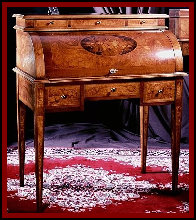
The name pocket watch may not actually be an appropriate name for these types of watches because back in the day the wealthy wanted
to show everyone else how wealthy they were. Often they wore these clocks around their necks suspended by either fancy ribbons
or ornate chains; in the style of Flavor Fav, the hip hop artist with the big clock around his neck. He may or may not wear
his clock around his neck for the same reason, but one thing may be certain . . . his clock is not as fancy or delicate as the antique
pocket watches of the past. In fact, I have wonder if he tried to sell his clock to the people in the commercial, how much money
would he get?
Many people confuse inlay with marquetry or parquetry which were both later used by other designers. In these techniques the
cutout and inserts are done on veneer panels that are then used to cover a piece of furniture. Parquetry is the term used for
geometrical patterns.
Antique Pocket Watches a Good Investment
I was watching a television program the other day and a commercial for one of those
companies that offer to buy your unwanted jewelry came on. I’m sure you have all seen them, they are like vultures; they know
that in a down economy, people are more apt to sell their valuables and take pennies on the dollar for things. This particular
commercial made me laugh because they had the audacity to say that jewelry that is just lying around your home is “never a good investment.” Then of course they make a pitch for you to come on down and sell it to them.